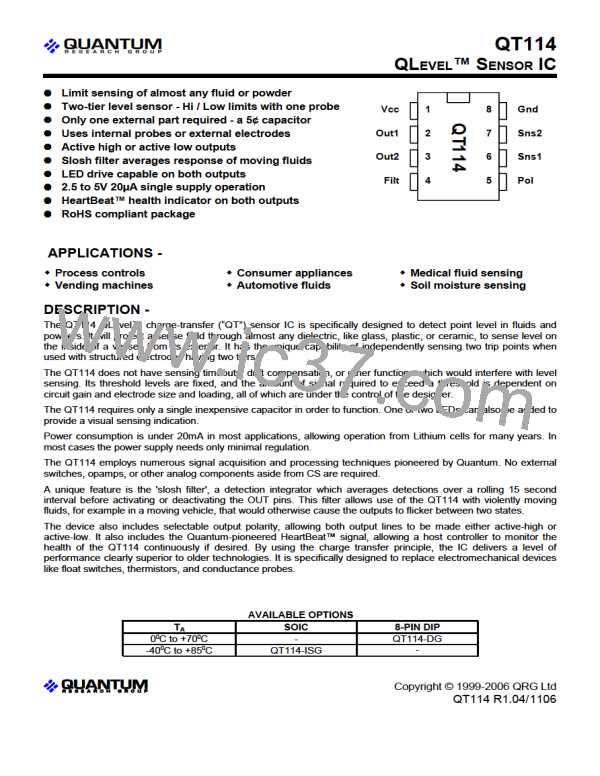T1
Figure 2-9 Twin-Level Internal Horizontal Probes
Figure 2-8 Single Internal Horizontal Probe
T2
Figure 2-10 Coaxial Probe For Non-Aqueous Fluids
Figure 2-11 Twin-Level Coaxial Probes For
Non-Aqueous Fluids
A bare internal probe used with conductive fluids and an
in-line blocking capacitor will generate a huge, robust
capacitive response that will not readily permit the use of a
two-level probe due to signal saturation. Even the slightest
amount of bare metal exposed to the fluid will usually
generate an immediate, large response with aqueous fluids.
2.2.7 VISCOUS, CONDUCTIVE
F
ILMS
Highly viscous fluids, or those having a high surface tension,
and having substantial conductivity can fool some electrode
designs into thinking that there is fluid present when there is
not. This is a particular problem with external electrodes,
where the residual films of certain types of fluids inside the
container, electrically coupled to the fluid mass below, will
create a substantial capacitive response. Internal probes are
much more resistant to this effect since the fluid surface is
guaranteed to become mechanically disconnected from the
probe when the level drops. Coating the inner vessel surface
with a smooth plastic of polyethylene or PTFE often has a
very beneficial effect on this phenomenon.
2.2.6 SCALE
B
UILDUP
Scale buildup on internal probes, bare or insulated, is not
generally a problem since the sensor is still measuring
capacitance, not conductance, and
a
reduction in
conductivity around the probe will have minimal or no effect.
Probe designs should be tested for this to be certain in all
specific cases.
2.3 SINGLE LEVEL SENSING
A legitimate concern with bare metal probes is the buildup of
scale or other deposits at the entry point of the probe into the
vessel. Such deposits may create a conductive surface path
(especially if the vessel is made of metal) that may lead to
false-positive trips. If the shank of the probe at the entry point
is insulated enough so that conductive bridging cannot occur,
this problem should be alleviated.
When sensing for a single trip point, the single electrode can
be a simple horizontal strip on the outside of a nonmetallic
vessel (Figure 2-2), or an internal probe having a substantial
horizontal 'plateau' at the trip point (Figures 2-4, 2-5, 2-8,
2-10). When the strip or plateau is ‘covered’ with fluid the IC
will detect on at least the OUT1 line; OUT2 can be ignored.
LQ
5
QT114 R1.04/1106

 QUALCOMM [ QUALCOMM INCORPORATED ]
QUALCOMM [ QUALCOMM INCORPORATED ]